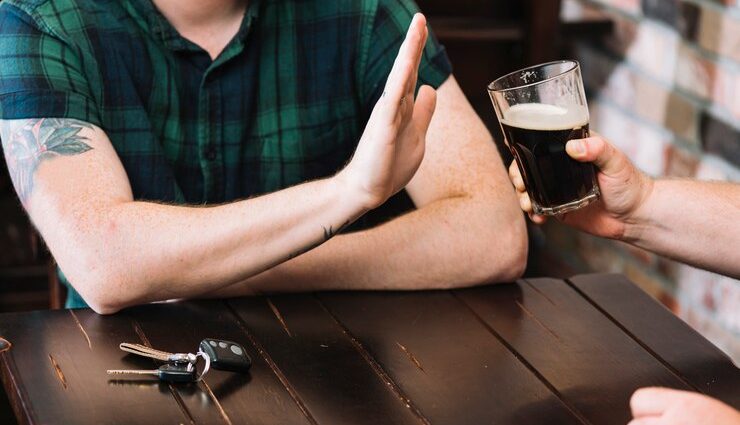Today you have left work and, like every Friday afternoon, you have met up with your friends for a few drinks. It is your tradition and almost your only way of keeping in touch. But this afternoon will be different, one of your friends tells you some news that surprises you all, he has been diagnosed with alcoholism and this habit of meeting up every Friday to drink is part of the problem.
This bombshell shocks you and your friends, making you think it’s a joke, but it’s not. It’s a real problem and unfortunately very common, but also very difficult to understand. It’s difficult to understand because you also drink, you also go to these meetings with your friends and participate in this habit, but you don’t have alcoholism, you’re not an alcoholic, or so you think.
Then the doubts and questions begin: what makes you an alcoholic? Why are some people more susceptible to alcoholism than others? Can a habit lead to alcoholism? If you keep reading, you will find the answers.
Alcoholism or habit?
Diagnostic classifications, such as the DSM-5, define alcohol use disorder outside the diagnostic criteria as “a cluster of behavioral and physical symptoms, including withdrawal, tolerance, and craving.”
Within the criteria, however, they emphasize the frequency and recurrent consumption of alcohol as an essential part of its diagnosis, but could this recurrent consumption be considered a habit?
According to the Royal Spanish Academy of Language, if we take into account the sixth definition of the word habit, it may have something to do with it because it defines it as a “situation of dependence on certain drugs.”
But is it the habit itself that creates an addiction? The answer is a resounding no. An addiction, in this case, alcoholism, is a disease that develops thanks to different bio-psycho-social factors that come into play, going from a simple habit to an abusive consumption that modifies the brain structure and the behavior of the subject.
In other words, it is a combination of biological, social, and behavioral factors that make a habit, such as drinking with friends, become something more, an addiction. This is the most dangerous thing because there are some factors that we control and others that we do not, making it difficult to predict who, given the same situation, will develop the addiction and who will not.
Why do some people develop alcoholism and others don’t?
So why is it that within that group of friends, we talked about at the beginning, one will develop alcoholism and the rest will not? The factors that influence the development of alcohol addiction can be summarized as follows:
Biological factors
The biological factors that contribute to the development of alcoholism range from genetic inheritance to the alteration of different neurotransmitters and brain structures sponsored by the habit of consumption, which in subjects predisposed to addiction is a faster modification.
Alcohol use disorder is more likely to be found in family members: 40-60% of the variance in the risk of alcoholism is explained by genetic influences. Furthermore, the risk is three to four times higher for children of people with alcohol use disorder.
Regarding brain structures and neurotransmitters, it has been discovered that dopamine is involved at the beginning of addictions since it is related to pleasure, as is the so-called brain reward system, composed mainly of the Ventral Tegmental Area, among other structures.
Psychological factors
The perception that the subject has of alcohol consumption and the use that he makes of it can be very important. If in the group of friends that we talked about at the beginning, the one who has developed alcoholism used to boast of being the one who could hold his drinking the longest, he probably drank much more than his companions.
In addition to putting their health at risk by creating a harmful habit that is no longer controllable and has become an addiction. Therefore, behavioral patterns during adolescence, which is when this type of behavior begins, to control consumption and devalue the need for social validation are very important.
Social factors
The perception of drinking behavior and the availability of alcohol in the society in which the subject is immersed is also very important. It has been shown that societies where alcohol consumption is more permissive have higher levels of alcoholism.
For all these reasons, it should be noted that there is a fine line between habit and alcoholism. In this line some factors fall under the control of the subject, such as his/her behavior, and others that are not, such as his/her biological risk, so one must be very careful and always consume alcohol in moderation, and even avoid its consumption.
